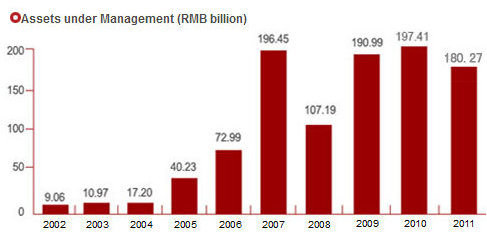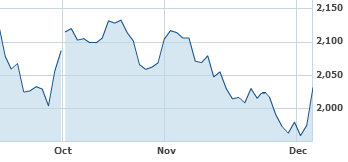Main reference: Story in Securities Times
THE DECADE-OLD qualified foreign institutional investor (QFII) program gave non-Chinese a foot in the door for PRC-listed A-shares.
Now that these equities are struggling mightily, the QFII funds are ready to jump back in with a passion, saying the time is ripe.
In 2002, China’s stock market regulator – the China Securities Regulatory Commission (CSRC) – launched the QFII scheme as a way of prying open the door to the country’s closely guarded capital markets to non-Chinese investors.

Licensed offshore institutional investors were slowly allowed in to buy yuan-dominated A-shares listed in Shanghai and Shenzhen which were previously reserved for locals given China’s tight capital controls.
In April of this year, the total QFII quota was in one fell swoop lifted to 80 billion usd from 30 billion previously.
While this amount seems substantial on its own merits, it still only represents a little over 1% of the total domestic market capitalization in the People’s Republic.
Nevertheless, it is worthy to follow any shifts in sentiment among QFII investors because the body of investors includes over 100 institutions from the four corners of the world.
More importantly for our purposes here, why is it that more and more QFIIs have dollar signs – or renminbi characters – in their eyes these days?
At a QFII forum held earlier this week in China, a who’s who of QFII firms, trust companies and joint venture fund management firms gathered to brainstorm on ways to exploit buying opportunities on the ongoing A-share bear market.
However, of the three parties represented at the lively discussion, it turns out that QFIIs are for more bullish than their brethren in the funds and trusts.
In fact, the overseas contingent was outright optimistic on prospects for China’s capital markets.
A quasi-consensus among the QFII representatives at the roundtable powwow was that late 2012 was looking more and more like 2005 – with the later representing the market nadir at the time that would signal the start of an incredible cyclical bull run for A-shares that wouldn’t truly run out of steam until Wall Street crashed some three years later.

In other words, they say that things look murky and dour now... exactly as they did seven years ago.
And it was the investors who were unafraid of jumping into the cloudy water in 2005 that were the biggest winners from that three-year upsurge in valuations.
In short, QFIIs seem more than willing to step up to the plate as they largely feel that things can’t get much worse – at least as far as share prices are concerned.
Zhan Long, general manager of BOCOM Schroders, said that the negative sentiment impacting the market is everywhere palpable.
But he said that overseas investors were focused on long-term opportunities with A-shares and that they felt there were plenty of undervalued counters worthy of second looks.
The investment firm this year alone newly signed up as consultants to four sovereign wealth funds dedicated to A-shares.
Tomas Franzen, chief investment strategist at the Second Swedish National Pension Fund, said that beginning in 2007 his firm has been closely paying attention to A-shares.
At the time, average P/E ratios among China-listed equities were at a lofty 30-40 times, a level he said was difficult to ensure healthy returns to new shareholders.
But after five years of market gyrations and profit digestions, he said valuations in China have now become “very cheap,” and that now was a good opportunity for QFIIs to jump back in.
The Swedish pension fund recently won a new QFII quota and was aggressively seeking out both a market consultant and opportunities to jump back into the A-share markets.
Not to be outdone, Barclays Capital Head of Asia-Pacific Program Trading James Chen said his firm was closely looking at opportunities in China’s fledgling ETF business, particularly the new ETF products listed in Hong Kong that track the yuan-denominated A-share markets from the former British colony.
With the lost Year of the Dragon that was the A-share downturn, perhaps it wouldn’t hurt local investors to take a look at what non-locals are doing in the domestic bourses to get a better handle on where things might be headed.
See also:
E FUND: Betting On A China Recovery
PASSE PREMIUMS: China Shares Now Cheaper Than HK Twins
Gold Or Homes? JIM ROGERS Tips On China
Main China Investment Themes For 2013







